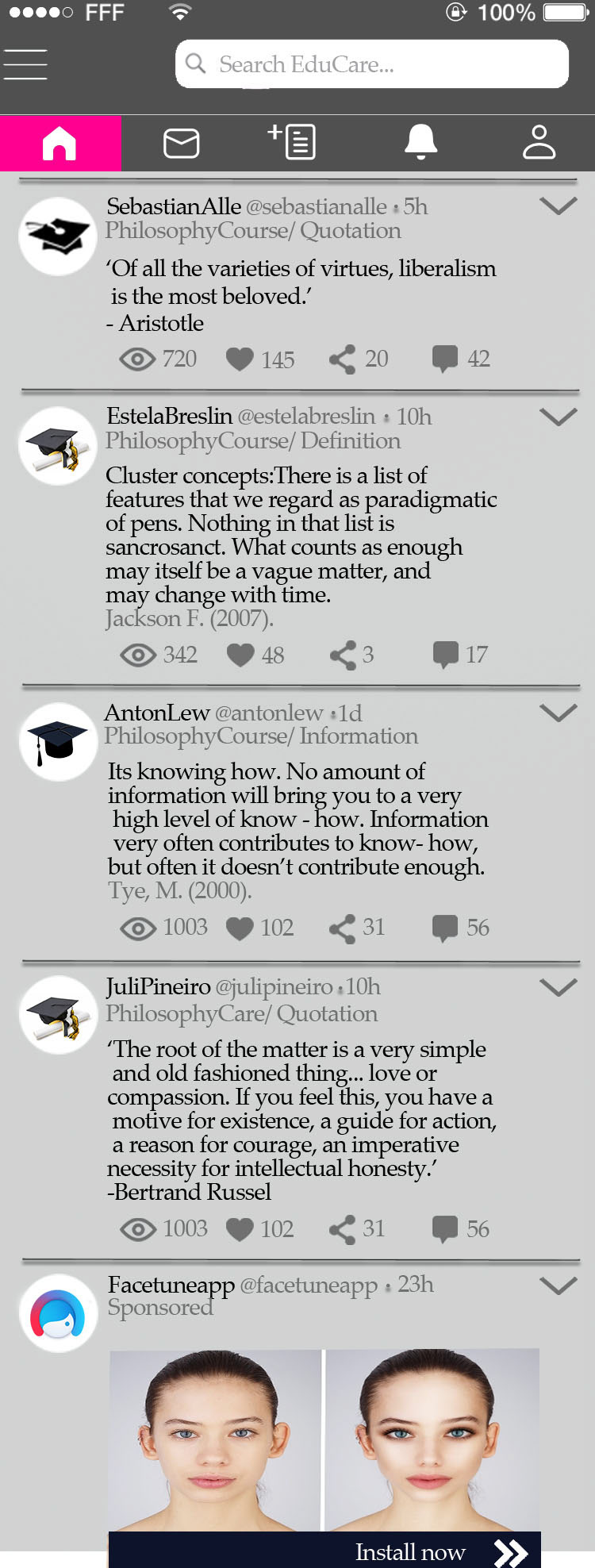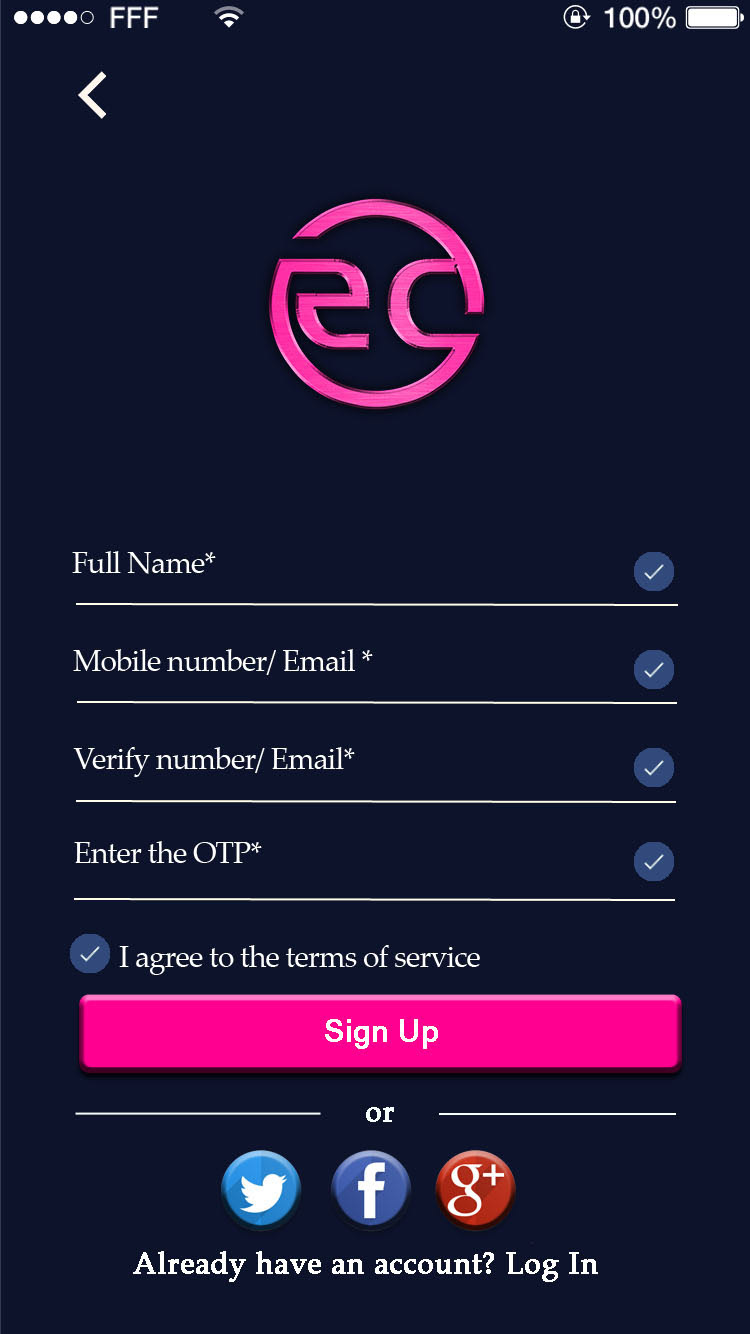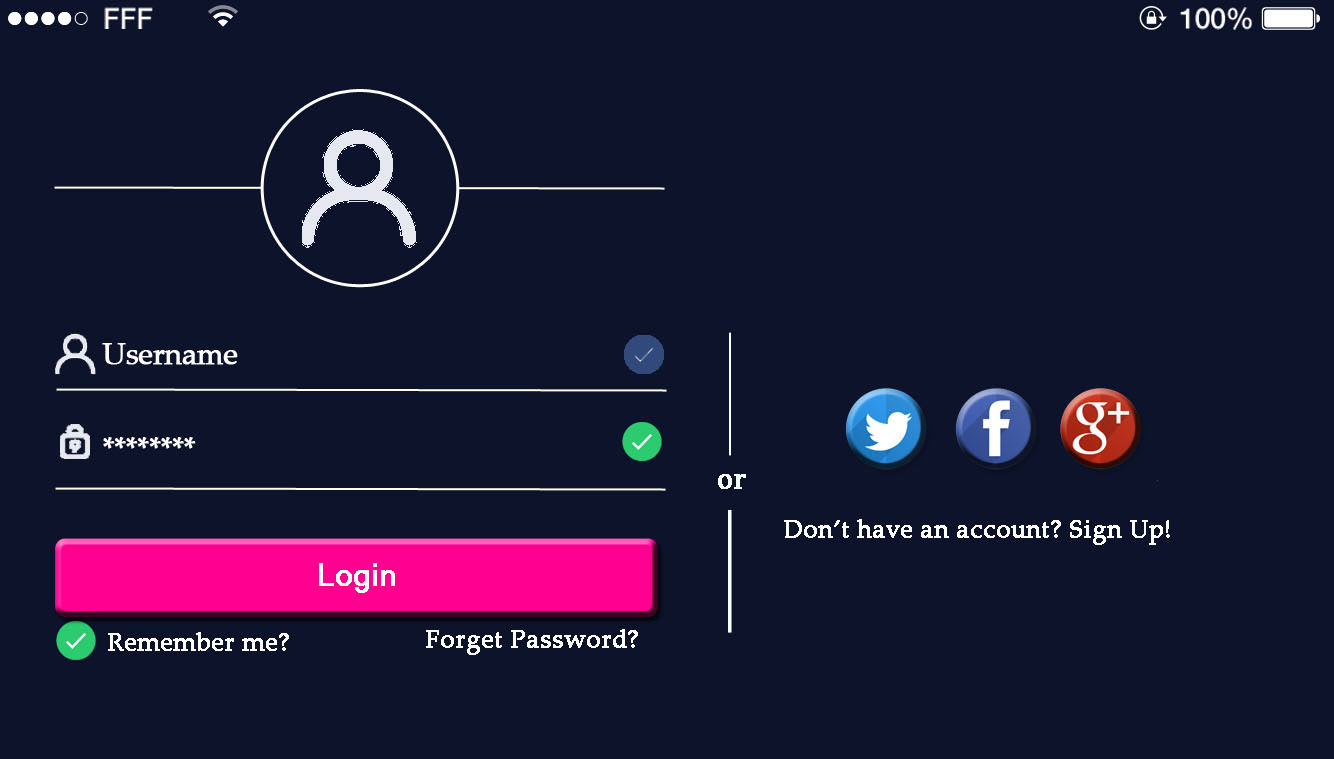Concentration issues are a common occurrence for students. 75% percent of the 2, 462 teachers surveyed indicated that the Internet has a positive impact on students' skills. EduCate works like all the other social apps. The main difference, though, is that with EduCare you can select the course you want to learn more about and read only that course's content. If your subject area is media communication, you will only read posts or other "Eduts," as I've called them, about media communication. When you surround yourself with virtual people who share your interests, things get easier. My USP is that you can actually increase your productivity by becoming "addicted" to the app. You only read content written by others who have studied or are interested in your subject. With EduCare you take care of your time.
Accessibility:
Accessibility is critical because 20% of your expected audience has some kind of disability.
My app features a simple minimalist design, a lower contrast ratio for larger texts, which aids people with low vision in reading. Additionally, my design incorporates rotational operations and focusable elements. I also want to emphasize that, as a social app, you can access it from a variety of mobile mobile devices, including laptops and tablets.
My app features a simple minimalist design, a lower contrast ratio for larger texts, which aids people with low vision in reading. Additionally, my design incorporates rotational operations and focusable elements. I also want to emphasize that, as a social app, you can access it from a variety of mobile mobile devices, including laptops and tablets.
Usability:
A responsive design demonstrates not only accessibility, but also usability. I've made a concerted effort to maintain consistency by utilizing grids and conventional icons, positioning, styling, and shapes. The top bar is also necessary for the user. Another oversight I noticed on Twitter is that it's far too easy to publish something and there is no editing button. I've attempted to avoid it because it's critical to warn users before taking such a big step as publishing something.


Monitorization:
My app will generate revenue through native advertising, but it will also include a freemium component. When you register, you are offered a functional, basic, and full-featured free version of EduCare (i.e., consider Dropbox, YouTube, or LinkedIn). You can then upgrade to a premium service, which will remove advertisements, increase your chances of being suggested to others, and provide you with additional features in general.
Material Design:
Let's move on to material design, which also defines the functionality of the various tools and facilities included in my app. The dimensions of a material's surface can expand along one or more axes to accommodate additional content.
Another critical aspect of material design is that the top bar remains fixed in place while the background scrolls vertically behind it.
Another critical aspect of material design is that the top bar remains fixed in place while the background scrolls vertically behind it.
I maintained consistency throughout the buttons by employing the same layer of shadows. The same offset is used to edit floating buttons. By maintaining consistency and placing buttons in prominent locations that are easy to access, you can ensure accessibility. To make it crystal clear which elements are clickable, I used a different font and button-oriented shapes.
One of the most critical components of a material design was the grids section, as it requires some time and effort. Grids, paddings (refers to the space between elements), and keylines are critical elements in a design because they ensure consistency.
The material stretch can be entirely horizontal with a scrimmed background, as seen on the services page. I should mention that a scrimmed background is necessary to convey a sense of elevation. On the page where you should submit an Edut and on the services page, I used a scrimmed background (shadows are also significant).
Additionally, a card can stretch to display a region that scrolls independently of the rest of the card's content (for example, the homepage). Where central alignment was required, I used surface containers to maintain the same distance between them.
Legal Issues/ Terms and Conditions
When it comes to social apps, in accordance with DMA guidance and GDPR, it is permissible to collect emails or mobile numbers as long as users are informed about the Terms and Conditions under which their data will be used.
Demographic data will be used in my case to develop my app strategy, as well as for anticipated collaborations with other businesses. By collecting data on their likes, comments, and posts, you can determine areas of dissatisfaction and create an app 'just for them.' I will be requesting emails to avoid fake accounts, bots, or spam accounts (6 months after a user deletes his account, all of the his data gets deleted).
Demographic data will be used in my case to develop my app strategy, as well as for anticipated collaborations with other businesses. By collecting data on their likes, comments, and posts, you can determine areas of dissatisfaction and create an app 'just for them.' I will be requesting emails to avoid fake accounts, bots, or spam accounts (6 months after a user deletes his account, all of the his data gets deleted).























